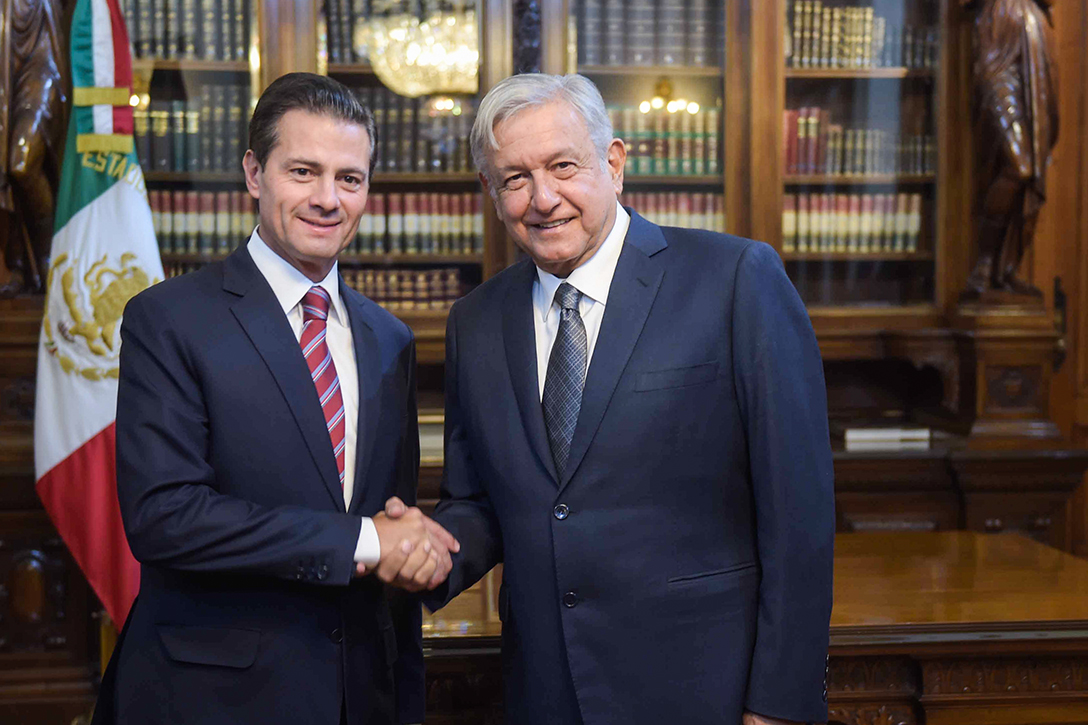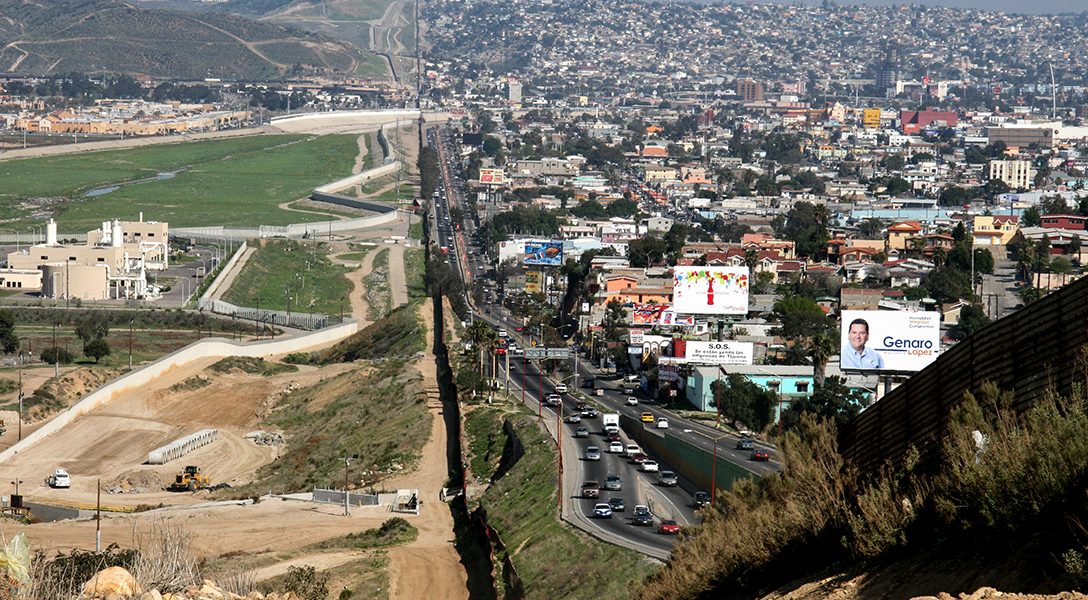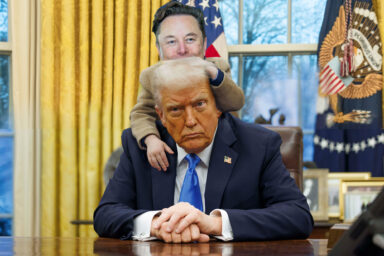Trump’s War on Asylum Moves South of the Border
US Will Force Asylum Seekers to Wait in Mexico for Months, or Even Years
The “Remain in Mexico” policy pushes Central Americans back across a dangerous border, limiting access to legal help and a chance at a new life in the United States.
As Central American asylum seekers wait for their cases to be decided — a process that can take years — the United States is returning them to Mexico, adding yet more hardship to their plight.
President Donald Trump’s most radical action on asylum to date — the so-called Remain in Mexico policy — has been inaugurated at San Ysidro, the world’s busiest land border crossing, between the cities of San Diego and Tijuana. It could soon be expanded all along the 2,000-mile border.
Migrants who pass a “credible fear” interview, the first step in the asylum process, will be sent back across the border with notices to appear in immigration court at some point in the future. On those dates they will be escorted before an immigration judge for hearings in the United States, but then returned again to Mexico.
The Remain in Mexico policy has blindsided immigrants’ rights groups on both sides of the border — as well as migrant shelters, legal-aid organizations, and humanitarian operations. They are preparing to challenge it in US courts. Meanwhile, asylum seekers could be trapped in dangerous border areas where Mexico struggles to protect even its own citizens.
The new policy — officially called Migration Protection Protocols — does not apply to anyone with Mexican nationality, nor does it yet apply to unaccompanied minors. But the Trump administration seems particularly obsessed with denying humanitarian protection to distressed migrant children. Its 1,300-page proposal to reopen the government after day 33 of the shutdown included a ban on Central American minors applying for asylum at the US border.
Trump’s Wall, or “see-through steel barrier,” would not keep out legal asylum seekers trying to turn themselves in to US authorities. But a policy of dumping them on the Mexican side of the border, if successful, raises a formidable, virtual “wall” against people claiming asylum status. And Mexico might ultimately pay for it by supporting tent cities of refugees.
The Trump administration seems remarkably unaware of — or indifferent to — the fact that Mexico is not safe. An estimated 96 percent of crimes committed in Mexico do not end in a conviction. Crimes committed against migrants, including extortion, rape, kidnapping and murder, go unsolved 99 percent of the time. The number of murders in Mexico has nearly doubled in four years. In Tijuana, it has nearly tripled.
“The plan … represents an enormously dangerous precedent worldwide by requiring individuals who are in search of asylum to remain in unsafe third countries in violation of article 33 of the Refugee Convention of 1951,” said Wendy Young, president of Kids in Need of Defense (KIND).
Mexico now stands accused of being Trump’s accomplice. Human rights and civil society groups expressed their outrage in a open letter: “By accepting the return or transfer of individuals seeking asylum in the United States to Mexico, Mexico is complicit in US policies that violate the rights of migrants and asylum seekers.”
The Real Border Crisis
.
Trump shut down the government to demand money for construction of a border wall at a time when illegal border crossings are at their lowest level in decades. Most unauthorized immigrants have entered the US by flying in and then overstaying their visas. The number of undocumented immigrants living in the country is at the lowest level since 2004.
The real border crisis, argues Rep. Veronica Escobar (D-TX), is the failure to adapt to the surge of asylum-seeking families and children, highlighted by the deaths of two recently arrived migrant children in federal custody — 7-year-old Jakelin Caal Maquin and 8-year-old Felipe Gomez Alonzo.
Asylum claims over the last 10 years have now risen by 2,000 percent (from less than 5,000 in 2008 to 97,000 last year). In November alone, more than 25,000 families crossed the US border, setting a monthly record. The overwhelming majority are from the so-called Northern Triangle countries (Guatemala, El Salvador, and Honduras) in Central America, three of the world’s most violent countries.
Meanwhile, there is a backlog of over 800,000 asylum cases in US courts.
Trump’s response to this humanitarian crisis has been to denounce, in speech after speech, the “invasion” or “onslaught” of “immigrants coming over the border to kill you.” His administration has done everything in its power to scare them away — from separating children from their parents, to mandating families be locked up in indefinite detention, to sending 6,000 troops to the border authorized to use “lethal force.”
But the strategy has failed. A recent study shows that the single biggest reason people flee is that they have been victims of a crime once or even multiple times in the past year.
‘Policy Options’: Targeting Parents and Deporting Children
.
On January 18, Sen. Jeff Merkley (D-OR) released a Trump administration memo leaked by a whistleblower, titled “Policy Options to Respond to Border Surge of Illegal Immigration.” The memo shows Trump officials carefully strategizing the Remain in Mexico and child-separation policies over a year ago.
Dated December 2017, it reveals that the experiment in separating children from their parents — for many Americans one the darkest moments of the nation’s recent history — was aimed at asylum-seeking families. The memo suggests prosecuting the parents of migrant families while separating them from the “minors present” and denying the kids asylum hearings to deport them more quickly. The reason: it “would be reported by the media and have substantial deterrent effect.”
Another one of the “Policy Options” — detaining tens of thousands of families until they go to immigration court — faces steep legal and logistical challenges. But what if those families were stopped at the Mexican border? That’s the idea behind the memo’s proposal to “require aliens from the Northern Triangle to remain in Mexico until their removability and claims for relief have been decided by an immigration judge, which will likely hold hearings at the ports of entry (port courts).”
Building a wall on Mexico’s southern border was one of Trump’s campaign promises. Ending “catch and release” was another. “Catch and release” is how he describes the practice of allowing asylum seekers to remain in the United States while awaiting a court hearing. A “dangerous practice,” according to him, and a “terrible loophole” in US law that is “exploited by criminals and terrorists to enter our country.”
When the Trump administration talks about “catch and release,” it is referring to a whole set of laws and policies that protect asylum-seeking families and underage migrant children. That includes the 1997 Flores Settlement, a legal decision limiting child detention to 20 days; the 2008 Trafficking Victims Protection Reauthorization Act, which prohibits forcibly returning unaccompanied migrant children to a place where they are in danger; and international refugee law that prevents someone from being pushed back to a country if they face persecution and/or violence.
In the eyes of Trump and his officials, Remain in Mexico is the ultimate solution. “‘Catch and release’ will be replaced with ‘catch and return,’” said Homeland Security Secretary Kirstjen Nielsen. “Aliens trying to game the system to get into our country illegally will no longer be able to disappear into the United States where many skip their court dates.”
What is Mexico Getting in Return?
.
Why is Mexico’s new president, Andres Manuel López Obrador, willing to accept Trump’s policy of turning its border region into a “waiting room” for people seeking asylum in the US?

It is not clear whether the decision was forced on Mexico or was the result of bilateral negotiations. Nielsen was in the audience at López Obrador’s inauguration on December 1, when he vowed to transform his country by waging a two-front war on poverty and corruption. Mexico’s newly minted foreign minister, Marcelo Ebrard, paid her a visit in Washington, DC, on December 3 that included “high-level” talks with Secretary of State Mike Pompeo.
A tweet from Trump in late November had already served notice that he could quickly become an existential threat to the new government: “All will stay in Mexico. If for any reason it becomes necessary, we will CLOSE our Southern Border. There is no way that the United States will, after decades of abuse, put up with this costly and dangerous situation anymore!”
López Obrador seems unwilling to jeopardize his transformative political agenda by opposing Trump over immigrants. In addition, Mexico depends on the US for 80 percent of its exports.
While Mexico’s new government has expressed its willingness to cooperate with Remain in Mexico, it has rejected what the Trump administration wants most: a Safe Third Country treaty like the one the US has with Canada. Under such an agreement, people who need protection can be returned to another country against their will.
In theory, if a Safe Third Country treaty were signed, asylum seekers could not claim asylum in the US if they had already set foot in Mexico. Behind the scenes, the US has been demanding such an agreement since Trump’s media storm over the migrant “caravan” in April, when an unusually large group of several thousand people, half of them women and girls, traveled 3,000 miles from Honduras to request asylum in the US.

Critics of the Remain in Mexico deal argue that Mexico will be functioning as a de facto Safe Third Country for asylum seekers turned back at the US border — without actually signing anything and without actually providing a safe haven.
“It looks on the face of it that the Mexicans got gamed by the Trump administration,” Andrew Selee, president of the Migration Policy Institute, told WhoWhatWhy. “But there may actually be a cunning calculation behind this that it’s not going to be fully implemented for a very long time or will get tied up in litigation. There’s nothing in writing so Mexico can determine how it will respond once it becomes real.”
While there is no official quid pro quo for Remain in Mexico, López Obrador has pushed the Trump administration to invest in a “Marshall Plan” for Central America that includes impoverished areas in southern Mexico.
Just two days before Nielsen announced the Remain in Mexico policy, the US State Department revealed its intention to invest $5.8 billion in aid to Guatemala, Honduras, and El Salvador — and $4.8 billion in Mexico.
“I have a dream that I want to see become a reality … that nobody will want to go work in the United States anymore,” López Obrador said at a news conference on the day of the announcement.
However, there is no new aid money in the package that is supposed to address the root causes of mass migration from Central America. It consists of already existing commitments and loan guarantees to private American companies. “‘Cynical’ is too nice a word for this shell game,” commented Adam Isacson, who monitors security trends and US military assistance in the Western Hemisphere. “This is an aid cut and a repackaging of already-given aid and loans, masquerading as a historically generous ‘Marshall Plan.'”
Will the Supreme Court Back Trump?
.
Immigrants’ rights groups — and perhaps the Mexican government as well — are counting on US courts to block the Remain in Mexico policy. The Trump administration expects to be sued and — with Brett Kavanaugh on the Supreme Court — to win. The general opinion among legal experts is that it is illegal to send asylum seekers back across the US-Mexico border while their cases grind through the immigration courts — because it makes it nearly impossible for them to obtain a fair hearing and puts their lives at risk.
Remain in Mexico was announced in December, just days after US District Judge Jon Tigar prevented the Trump administration — at least temporarily — from blocking asylum claims by people who enter the US illegally.
“Whatever the scope of the President’s authority, he may not rewrite the immigration laws to impose a condition that Congress has expressly forbidden,” wrote Tigar, denounced by Trump as an “Obama judge.” He noted that Trump’s ban — aimed at the migrant caravan from Honduras — would put asylum seekers “at increased risk of violence and other harms at the border.”
Judge Tigar’s decision was upheld by a divided Supreme Court (5–4) with Chief Justice John Roberts as the swing vote. Justice Ruth Bader Ginsburg voted from the hospital.
The looming court battle over Remain in Mexico could prove murkier. The Immigration and Nationality Act has an obscure provision that allows the government to send migrants back to another country while they await deportation proceedings, yet it specifically exempts asylum seekers who have passed a “credible fear” interview.
Stephen Legomsky, former chief counsel for Citizenship and Immigration Services under President Obama, calls the Remain in Mexico policy “flatly illegal.” But he told WhoWhatWhy he is not certain the Supreme Court will agree with him. “While Roberts might occasionally disagree with the other hard-line conservatives on the Supreme Court, he doesn’t do it very often on immigration. If he follows the logic of the [Immigration and Nationality Act] statute, he will conclude that the policy is illegal. But on the other hand, because it is such a convoluted statute, he might very well say that the government’s interpretation cannot be dismissed as unreasonable. It’s too close to call.”
Related front page panorama photo credit: Adapted by WhoWhatWhy from © Morena Perez Joachin / DPA via ZUMA Press



